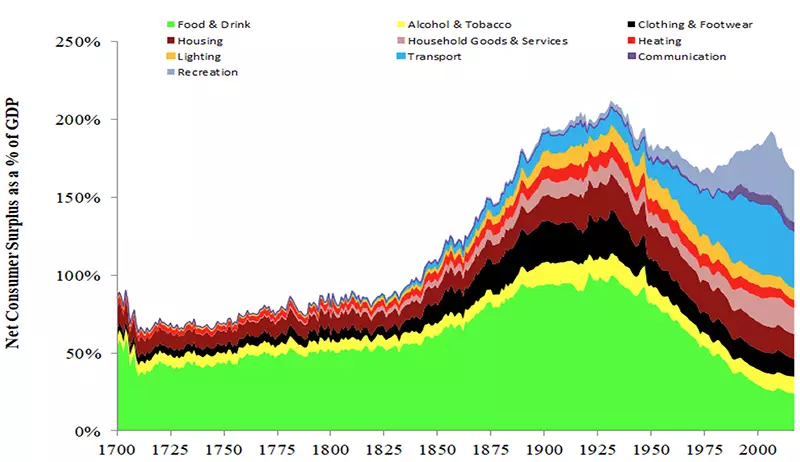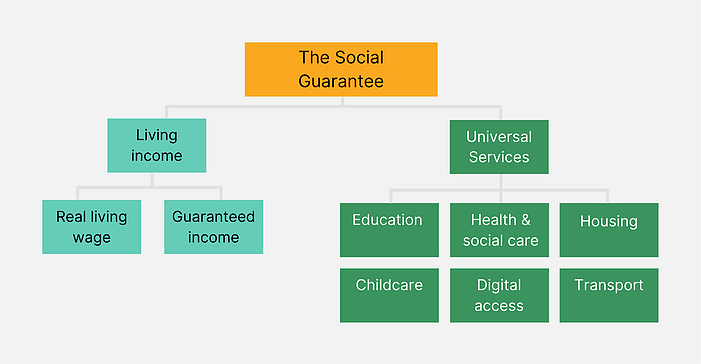52 Welfare
52.2 Net Domestic Consumer Surplus
Fouquet
Roger Fouquet is currently working on estimating the Net Domestic Consumer Surplus (NDCS) for the United Kingdom over the last three hundred years. NDCS measures the area below the demand curve for each consumer category and above the price line, and sums all the consumer categories to produce an aggregate value. NDCS offers a new macroeconomic indicator of economic welfare and a complement to GDP.
The preliminary results indicate that the broad trend in Net Domestic Consumer Surplus (NDCS) per capita is similar to GDP per capita – showing the improvements in welfare from the end of the nineteenth century, major increases since the 1950s and a decline following the Great Recession of 2007-8.

Figure: Net Domestic Consumer Surplus (NDCS) per capita in the UK, 1700-2017
GDP per capita heavily under-estimates the consumer welfare gains at early stages of economic development and over-estimates the consumer welfare gains at later stages of economic development. For instance, each pound or dollar produced today is not generating as much consumer welfare as 90 years ago.

